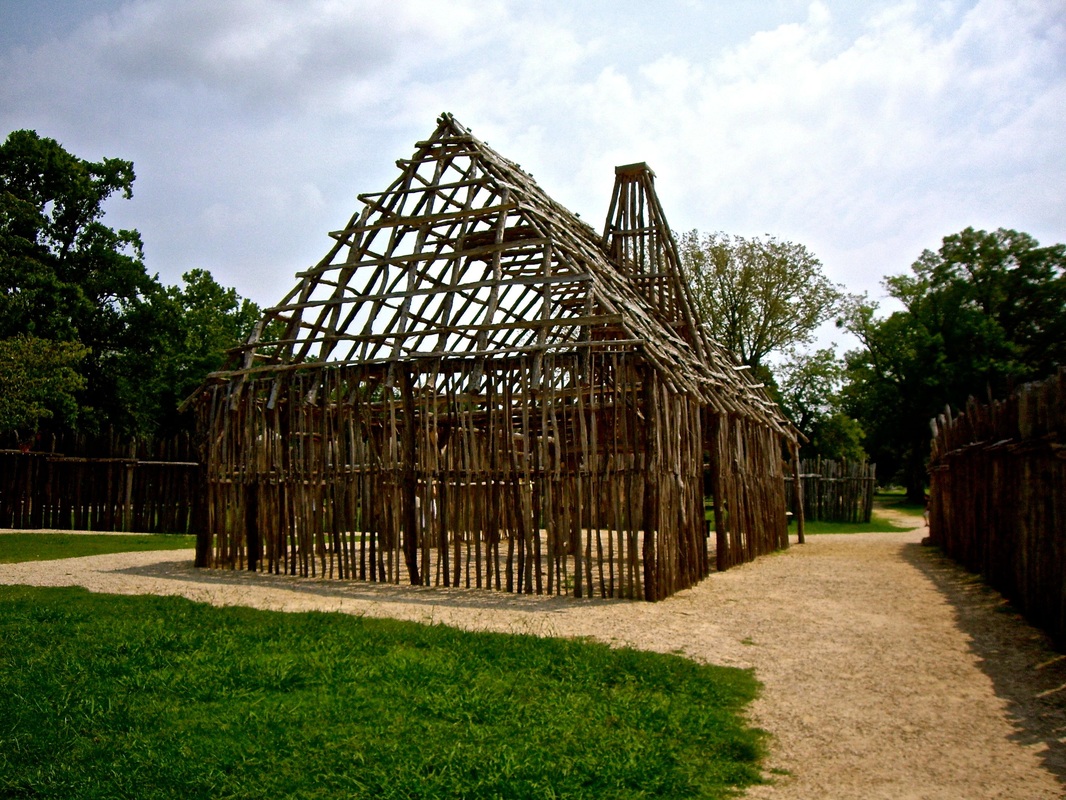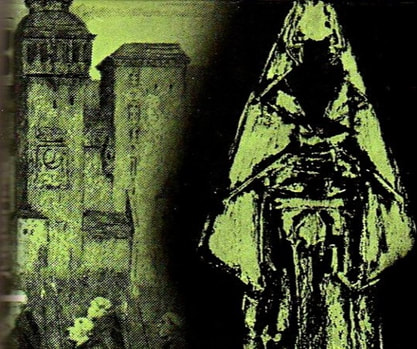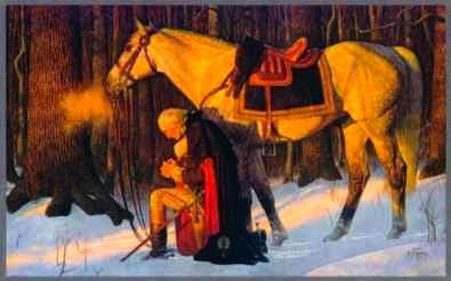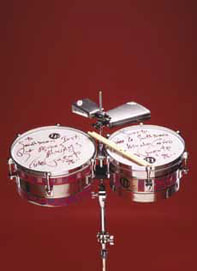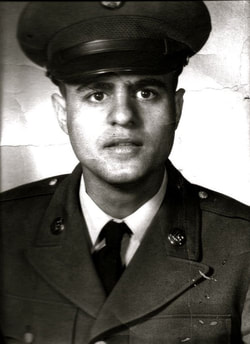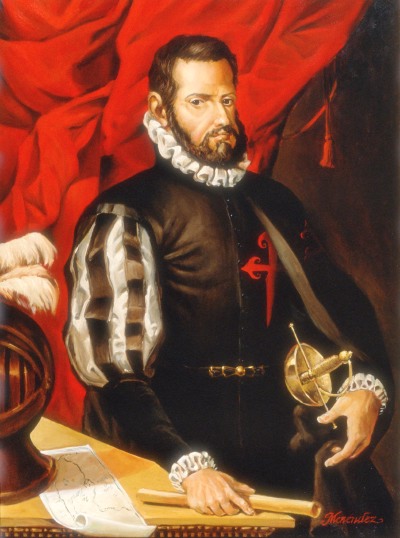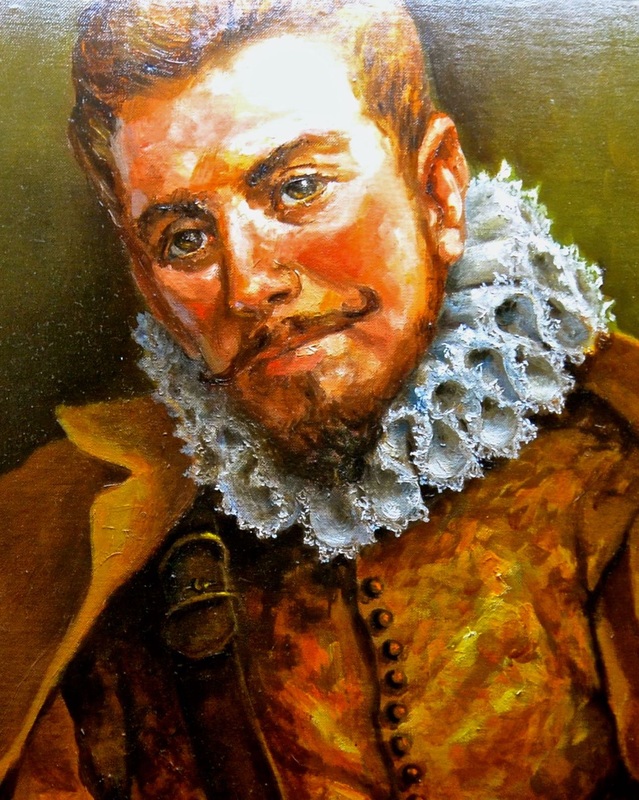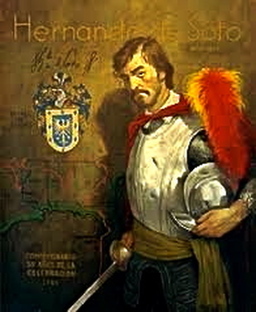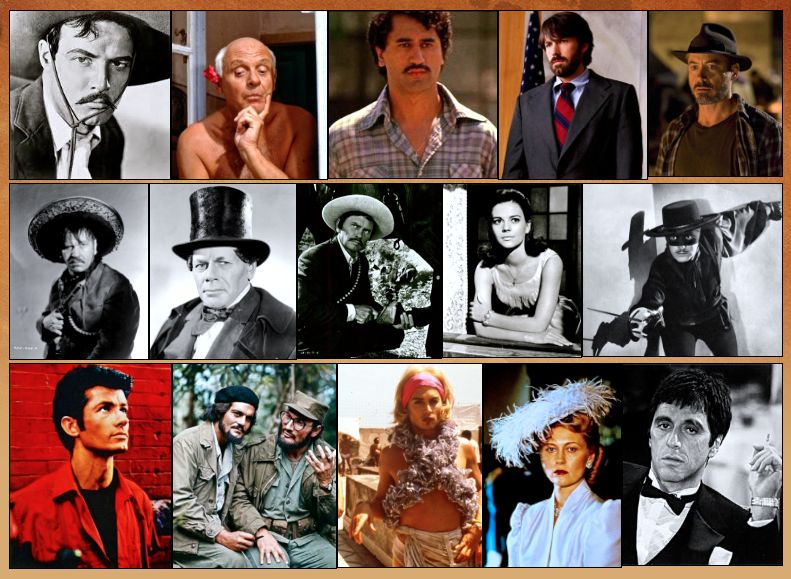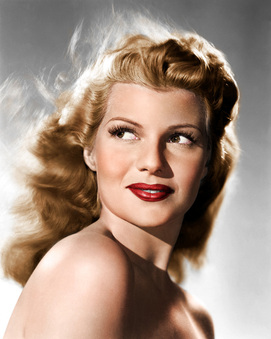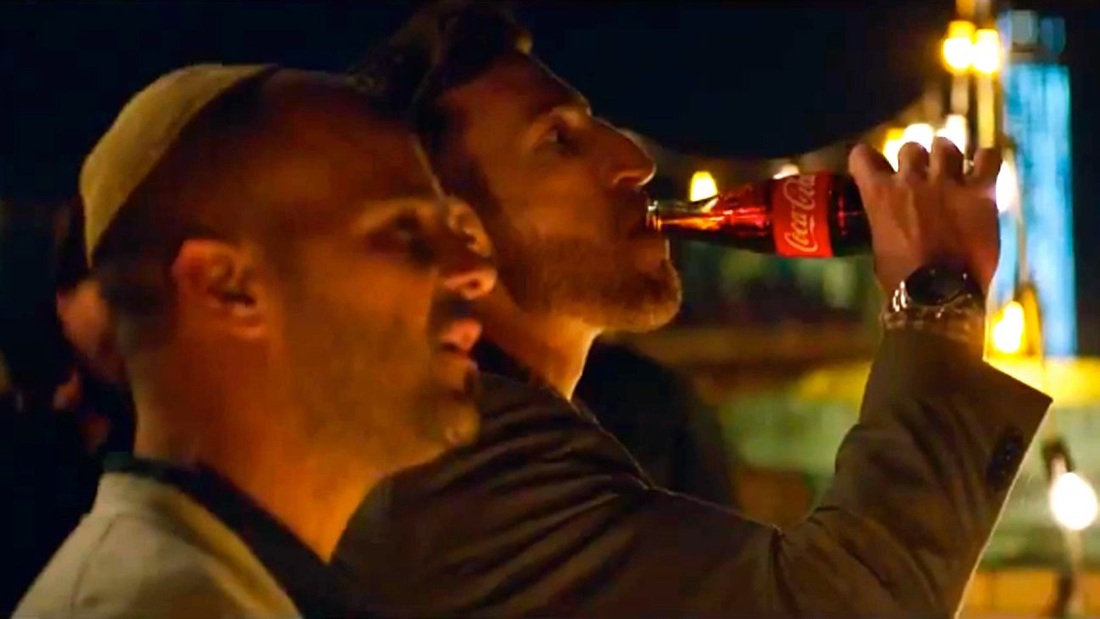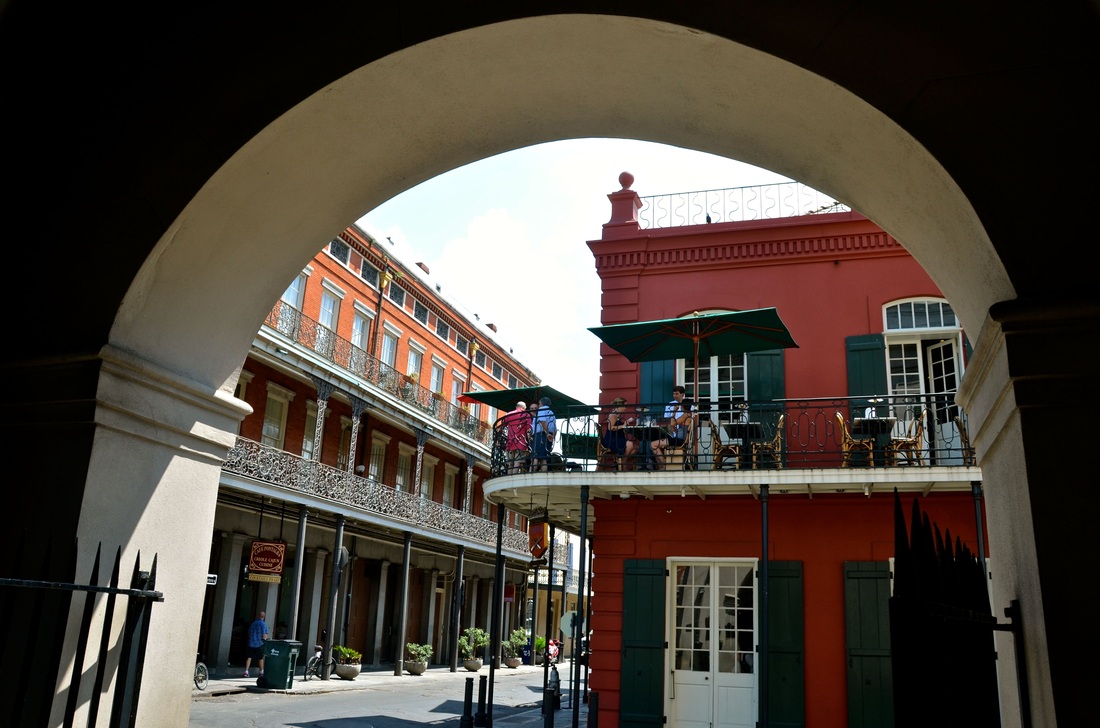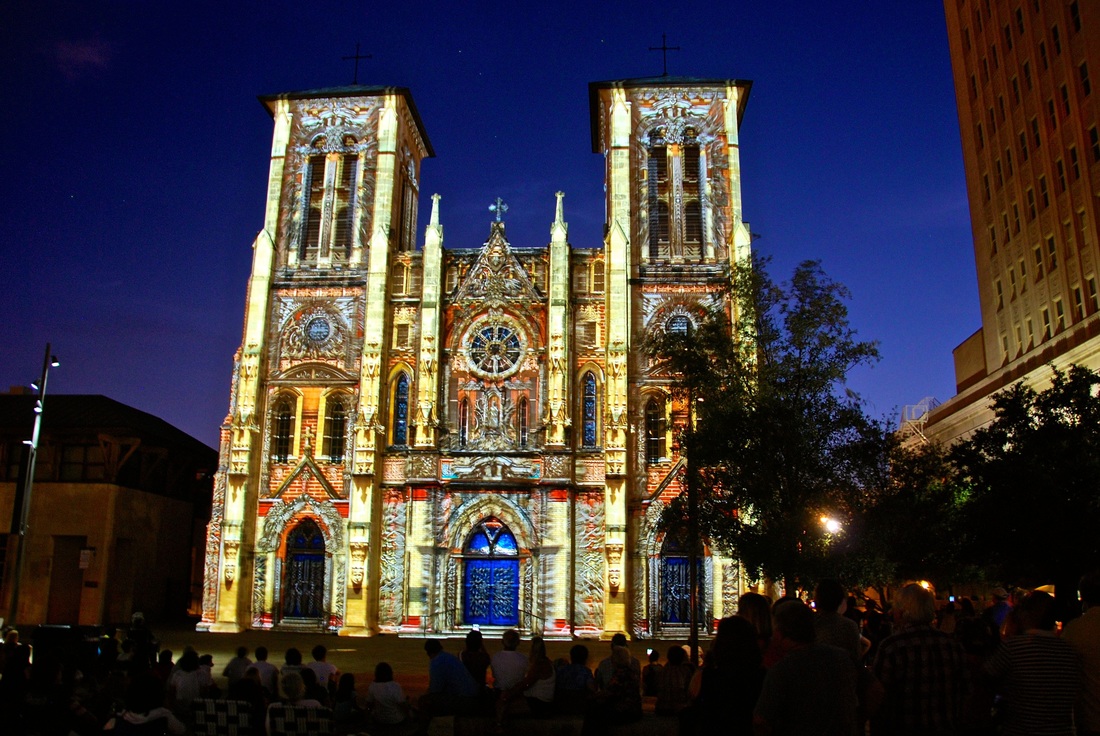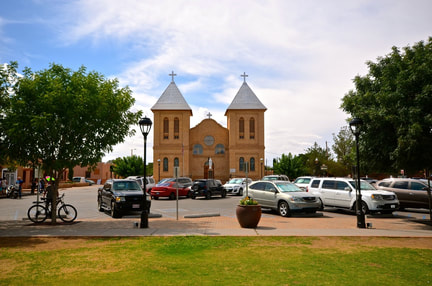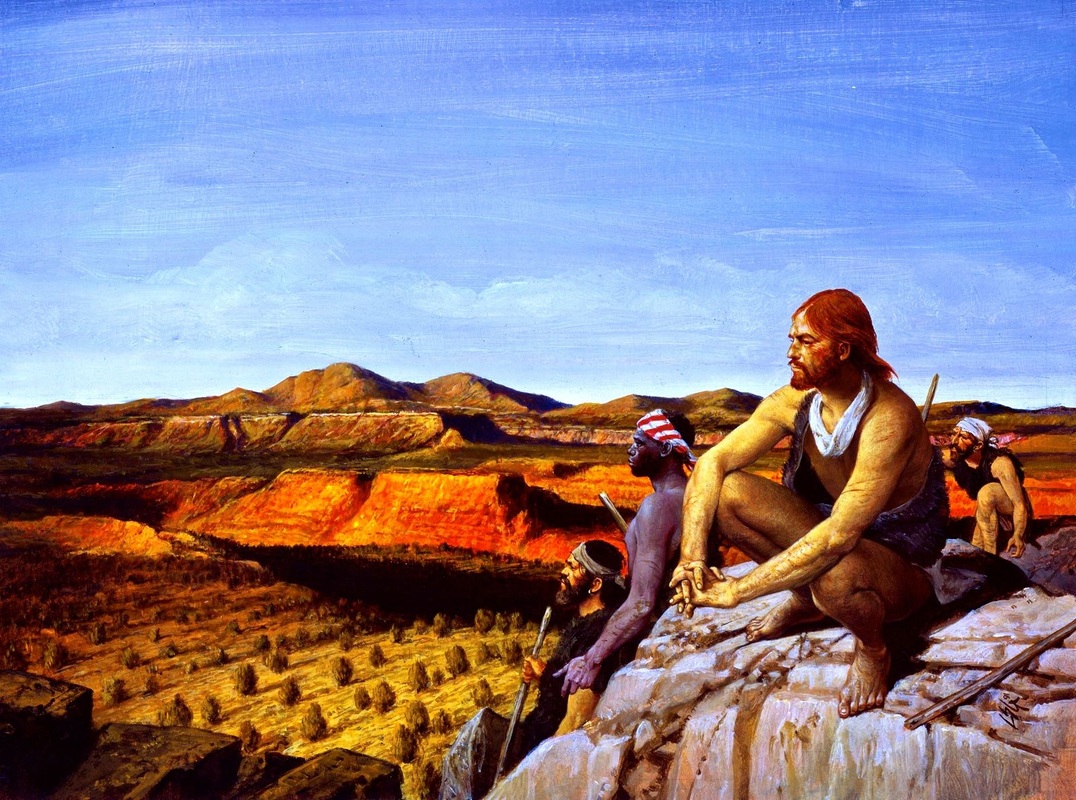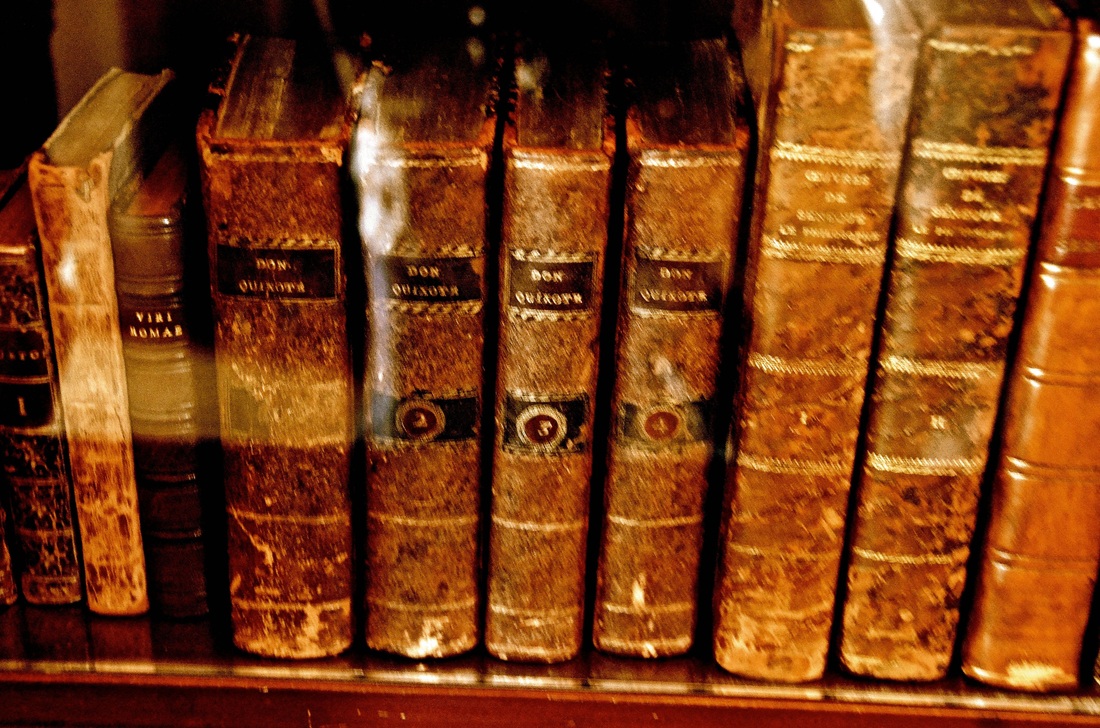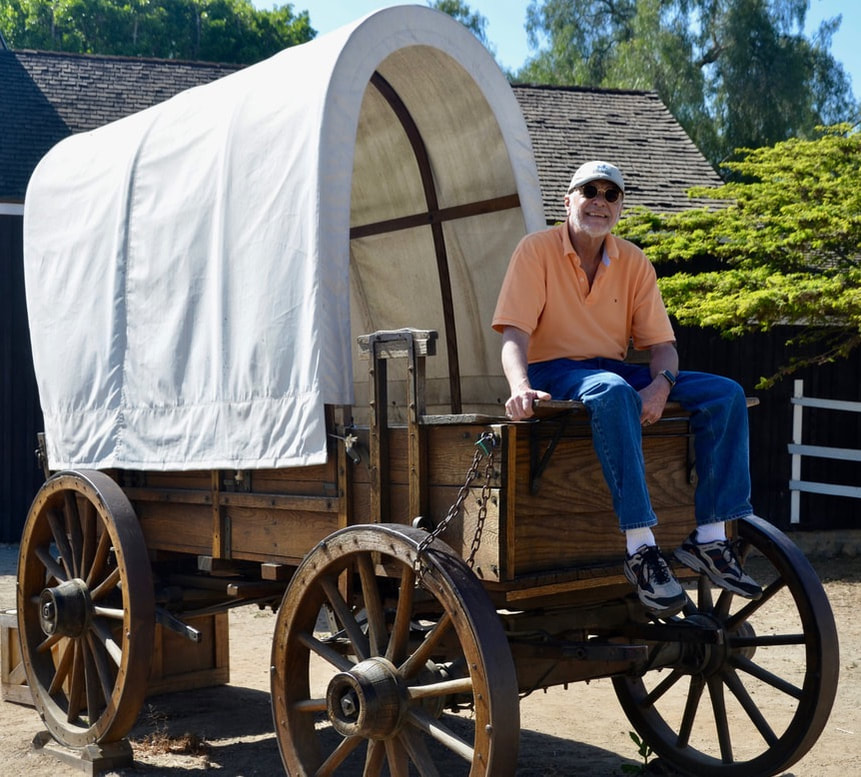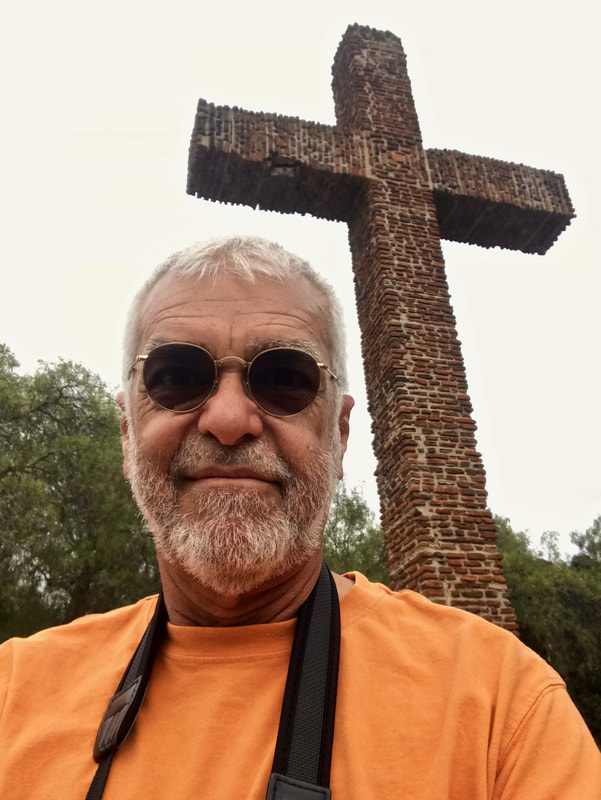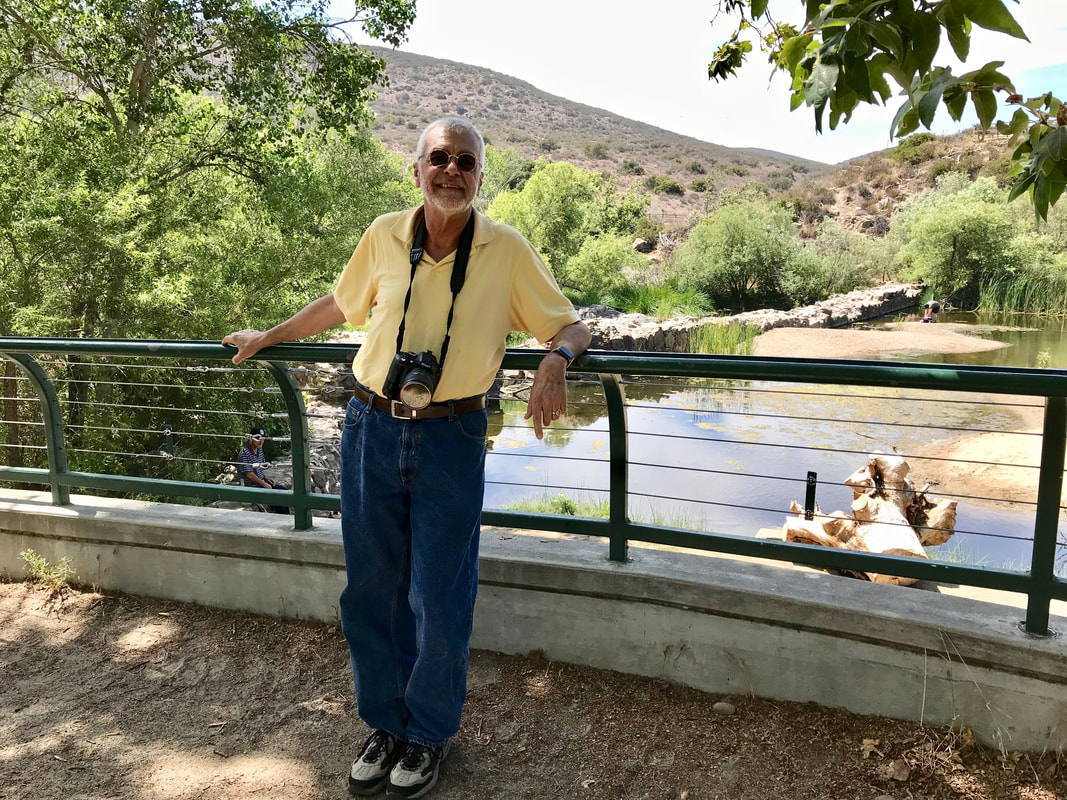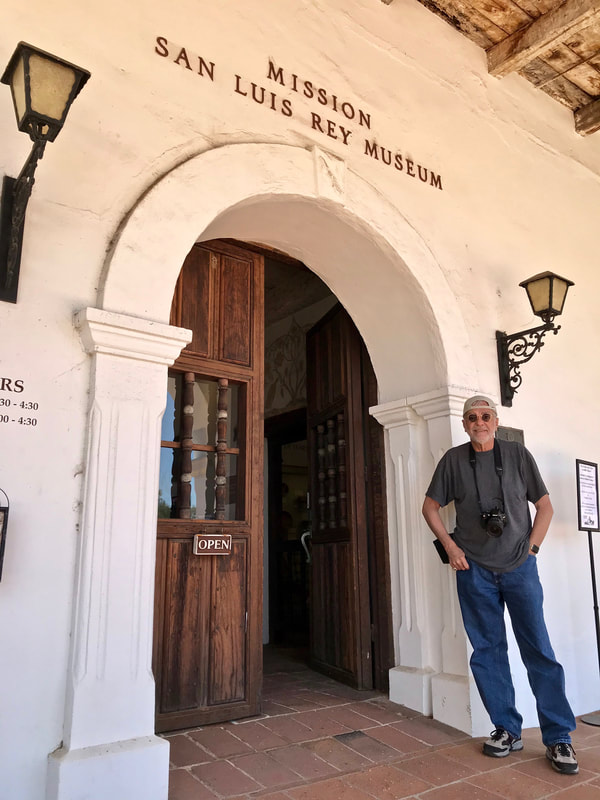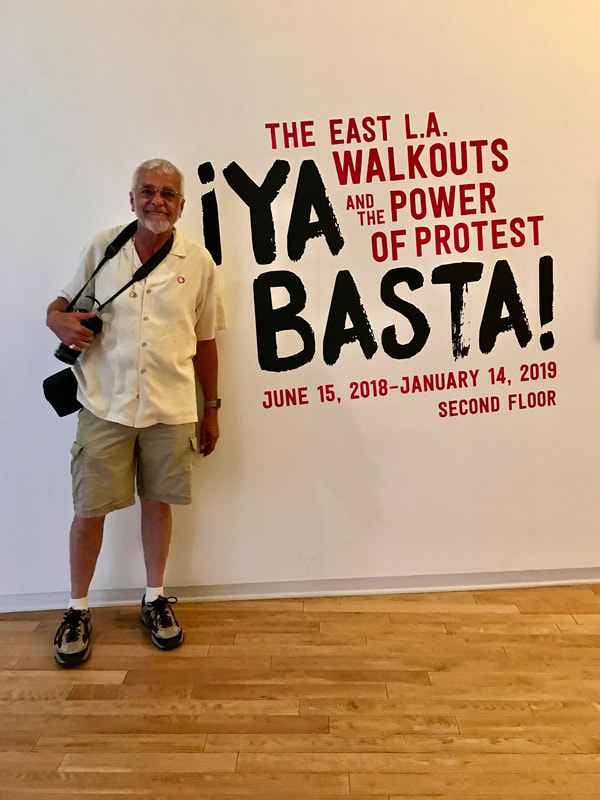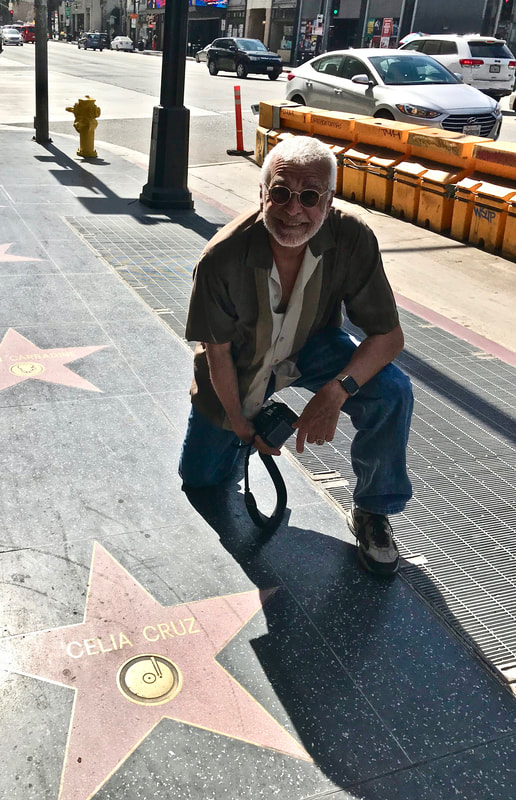CHAPTERS/CAPITULOS
1. Our Pre-Mayflower ThanksgivingsFor Latino immigrants, no other American holiday is more precious than Thanksgiving. "El dia de accion de gracias," as we know it in Spanish, is a welcomed opportunity to reflect on the reasons we came here and to express our gratitude for the religious, political and economic freedoms we enjoy — just like the Pilgrims of Plymouth Colony. Read more ...
|
|
2. A Tale of Two CitiesWhich came first: the Spanish conquistadors or the British colonists? Jamestown or St. Augustine? The Spanish language or the English language? Hernando De Soto or Lewis and Clark? Figuring out the answer to all those questions is much easier than the old puzzle about whether the chicken or the egg came first. Nevertheless, if your education is based on U.S. history books and school curricula, perhaps finding those answers is not as easy as it should be. Read more ...
|
3. Our Pre-Hispanic HeritageCHICHEN ITZA, Mexico — Until you get here and you stand before the great pyramid of Kukulcan, you don't fully appreciate the amazing ingenuity and achievements of the Mayan people. Sure, you may have seen pictures and heard that this ancient city was the political and economic center of a pre-Hispanic civilization that spanned through what is now southern Mexico, Belize, Guatemala and parts of Honduras and El Salvador. You may be aware that this amazing place recently was declared one of the "New 7 Wonders of the World. But you have to be here to understand why this place is so important and why it makes many Latinos, especially Mexicans, so proud of their heritage. Read more
|
4. The Black Legend ReturnsDon't blame it on talk radio and conservative politicians, as if they started something new. The anti-Hispanic rhetoric poisoning political discourse in the United States lately actually dates back to 16th-century Europe. That's when British and Dutch writers set out to deliberately spread negative propaganda about the Spanish colonies in the Americas. Read more ...
4. La Leyenda Negra Regresa25 de marzo de 2008 - No culpe a la radio y a los políticos conservadores, como si estuvieran comenzando algo nuevo. La retórica anti-hispana que ha estado envenenando el discurso político en los Estados Unidos últimamente en realidad se remonta a la Europa del siglo 16. Fue entonces cuando los escritores británicos y holandeses se dispusieron a propagar deliberadamente propaganda negativa sobre las colonias españolas en las Américas.
|
5. Even on HBO, The Black Legend LivesWatching the Founding Fathers and their historic creation of a new nation, even in a dramatization, always makes me feel proud to be an American. But just when I expected "John Adams" to make me feel proud to be a Latino, too, the new HBO miniseries did a huge fast forward, skipping almost the entire Revolutionary War and leaving the contributions of Latinos totally out of the picture. Read more ...
|
6. Our Spanish HeritageCARTAGENA, Colombia — Surrounded by a wall fortified by cannons and in the midst of fortresses and castles, there is no better place to appreciate Spanish influence in the New World than in this beautiful city by the Caribbean Sea. This is the place where U.S. Latinos come to recharge their ethnic batteries and to dig out the roots of their Spanish ancestry. Read more ...
|
7. Exalted or Offended?August 12, 2008 - It all began with an innocuous column to commemorate Hispanic Heritage Month, one that encouraged U.S. Latinos to take pride in the contributions their ancestors made to this great nation. And yet many non-Latinos were offended. Almost 20 years ago, in a column I wrote for the New York Daily News, I told Latinos that they have many reasons to take pride in their North American roots, that they should arm themselves with some historical facts so they will not allow anyone to treat them like foreigners or force them to speak only one language. Read more ...
|
8. We Are All 'Americanos'September 16, 2008 - Perhaps I had not been paying attention, but now that I'm in the midst of writing a series of columns on the Latino contributions to North American society, I see a history column everywhere I look. When Sen. John McCain reminded us that a Latina daughter of migrant workers is just as "American" as a boy whose ancestors were on the Mayflower, most people rightfully read it as a subtle message on U.S. immigration policy. I did, too. But I also saw a Latino-history column in the making. Read more ...
|
9. Latinos are FailingSeptember 23, 2008 - About this time every year, when Latinos can't keep up with all the parades and fiestas to celebrate Hispanic Heritage Month, I get terribly upset. I keep looking for the kind of substance that African-Americans absorb in serious seminars and lectures during Black History Month, but I can't find it! Amid the cocktail parties and parade pageants to elect queens and hobnob with politicians, what I find is that Latinos are too busy partying like there is no "mañana." Read more ...
|
10. Columbus Deserves His DayOctober 7, 2008 - To most of us, he was the ultimate explorer, the gutsy genius who brought Europe to the New World, one of history's greatest figures. His name, of course, was Cristobal Colón, better known here as Christopher Columbus, the Italian navigator, who sailed for Spain. Read more -->
10. Colón Merece Su Día7 de octubre 2008 - Para la mayoría de nosotros, él fue el máximo explorador, el genio audaz que trajo a Europa al Nuevo Mundo, una de las más grandes figuras de la historia. Su nombre, por supuesto, fue Cristóbal Colón, más conocido aquí como Christopher Columbus, el navegante italiano, que navegó para España. Lea mas -->
|
11. Two Good Places to RestOct. 14, 2008 - To most Spaniards, Christopher Columbus rests where he belongs: in the Gothic Cathedral of Santa Maria, in Seville, Spain, the city from where he set sail for the New World in 1492. But to most Dominicans, Columbus rests where he wanted to be buried: in Santo Domingo, Dominican Republic, where they have built him an impressive tomb — the cross-shaped monument known as "El Faro a Colon" (the Columbus Lighthouse). Read more->
11. Dos buenos lugares para descansar14 de octubre de 2008 - Para la mayoría de los españoles, Cristóbal Colón descansa donde pertenece: en la catedral gótica de Santa María, en Sevilla, España, la ciudad desde donde zarpó al Nuevo Mundo en 1492. Pero para la mayoría de los dominicanos, Colón descansa donde quería ser enterrado: en Santo Domingo, República Dominicana, donde le construyeron una impresionante tumba: el monumento en forma de cruz conocido como "El Faro a Colón". Lea mas . . .
|
|
12. Whitman's Prophetic LetterMarch 31, 2009 - The letter was penned in 1883, but it could have been written today. Its message is still very current. Its words still need to be repeated. "We Americans have yet to really learn our own antecedents," the letter noted. "Thus far, impressed by New-England writers and schoolmasters, we tacitly abandon ourselves to the notion that our United States have been fashioned from the British Islands only, and essentially form a second England only — which is a very great mistake." Read more -->
12. La Carta Profética de Whitman31 de marzo 2009 - La carta fue escrita en 1883, pero podría haber sido escrita hoy. Su mensaje sigue siendo muy actual. Sus palabras todavía tienen que ser repetidas. "Nosotros, los americanos aún no hemos aprendido realmente nuestros propios antecedentes", señaló la carta. "Hasta ahora, impresionados por escritores y maestros de escuela de Nueva-Inglaterra, tácitamente abandonamos a la idea de que nuestros Estados Unidos se han formado de sólo las Islas Británicas, y, esencialmente, forma solamente una segunda Inglaterra sólo -- que es un error muy grave". Lea mas -->
|
13. America's CradleSANTO DOMINGO, Dominican Republic — September 1, 2009 — You tour the "colonial zone" and hear the names of the many amazing people who have lived here, at least for a while, on their way to discovering, exploring and settling the United States and the rest of the Americas. Read more -->
13. La Cuna de AmericaSANTO DOMINGO, República Dominicana – Al recorrer la "zona colonial" escucharas los nombres de las tantas personas fascinantes que allí vivieron, al menos por un tiempo, en su largo recorrido de descubrimiento, exploración y colonización de los Estados Unidos y el resto de las Américas. Lea mas -->
|
14. Our Quincentennial is Coming!SAN JUAN, Puerto Rico — September 9, 2009 -- When they take the time to read the writing carved on a marble wall in a particularly dark section of the San Juan Bautista Metropolitan Cathedral here, that's when visitors finally realize they are standing before the gravesite of one of the great Spanish conquistadors. Read more -->
14. !Nuestro Quinto Centenario Se Avecina!SAN JUAN, Puerto Rico - Cuando se toman el tiempo para leer la escritura tallada en una de las paredes de mármol en una sección especialmente oscura de la Catedral Metropolitana de San Juan Bautista, es cuando los visitantes finalmente se dan cuenta que están parados frente a la tumba de uno de los mas grandes conquistadores Españoles. Lea mas -->
|
15. American Discovery DaySeptember 15, 2009 - When he discovered the huge landmass now known as the United States, Juan Ponce de Leon decided to call it Florida. It was April 2, 1513, during the "Pascua Florida" season — Spanish for "Flowery Easter" — and that name seemed appropriate as the conquistador and his 200 explorers contemplated the lush vegetation along the shoreline. Read more -->
15. Día del Descubrimiento de AméricaCuando descubrió la tierra ahora conocida como los Estados Unidos, Juan Ponce de León decidió llamarla Florida. Era el 2 de abril 1513, durante la temporada de "Pascua Florida" y ese nombre pareció apropiado ya que el conquistador y sus 200 exploradores contemplaban la exuberante vegetación a lo largo de la costa. Lea mas -->
|
16. A Time to Welcome the SpiritsOctober 27, 2009 - During the next few days in Hispanic homes throughout this country, there will be people invoking the spirits — asking dead relatives to come back into their homes. In their living rooms — and even out in their yards — many Mexicans and Central Americans will build altars with pictures and mementos of their deceased loved ones. They will burn candles and incense. And they will make offerings to the dead — food, flowers, the favorite smoke or drink, and even the favorite music of the departed. Read more -->
|
17. A Hispanic ChristmasDecember 29, 2009 - We call it "Navidad," the Spanish word for Christmas. But literally, it means "Nativity" — and we have no qualms about the birth we are celebrating. Christmas traditions unfortunately are becoming politically incorrect in many segments of American society, but in the overwhelmingly Christian Hispanic-American community, we still proudly display our faith in Jesus Christ. Read more -->
17. Una Navidad HispanaLa llamamos "Navidad", la palabra española para “Christmas”. Pero, literalmente, significa "Natividad" – y no tenemos duda del nacimiento que estamos celebrando. Las tradiciones de la Navidad, lamentablemente se están convirtiendo en “política incorrecta” en muchos segmentos de la sociedad Estadounidense. Sin embargo en la comunidad Hispana-Americana, todavía se exhibe con orgullo nuestra fe en Jesucristo. Lea mas -->
|
18. JOSE MARTI: His Legacy Lives HereYou may have listened to his verses in the old Cuban song "Guantanamera." You may have seen his impressive statue in New York's Central Park. You may have heard him mentioned when Cuban-Americans and Washington politicians have discussed the U.S. government radio and TV stations that bear his name or when people have been talking about streets, parks, schools or theaters that were named after him — in Cuba, the United States and throughout the Americas. Read more -->
18. JOSE MARTI: Su Legado Vive AquíUsted puede haber escuchado sus versos en la vieja canción cubana "Guantanamera". Es posible que haya visto su impresionante estatua en el Parque Central de Nueva York. Puede haberlo oído mencionado cuando los cubano-americanos y los políticos de Washington han discutido sobre las estaciones de radio y televisión, del gobierno estadounidense, que llevan su nombre. O cuando la gente habla de las calles, parques, escuelas o teatros que se llaman como el – en Cuba, Estados Unidos y en todo el continente americano. Lea mas -->
|
19. Hyphenated and Proud!April 6, 2010 - Every once in a while, a reader writes me a letter demanding that I must choose. "You can be a Cuban or an American. Not both," one of them wrote last week. "It is long time past for you to pick a country." The fact that I call myself a Cuban-American is offensive to some people. Luckily, I'm not alone, because they are offended by all hyphenated Americans. Read more -->
|
20. Politicizing EducationJune 8, 2010 - When I was a boy growing up in my native Cuba, communist ideology suddenly began to be filtered into my education. The government had determined that, like all other Cuban children, I was to be indoctrinated. Lesson plans were to be altered; new books had to be written; history needed to be distorted; and Cuban children were to be taught to believe that "Yankee imperialists" were our new enemies — the reason for all our problems. Read more -->
|
21. Speak Any Spanish Lately?December 14, 2010 -- When we take a lunch break, often we go to a "cafeteria." When we need to take a nap in the afternoon, we take a "siesta." When politicians show no courage, we say they lack "cojones." When we want to praise a concert musician, we shout, "Bravo!" When big storms are coming, especially "tornados," we often blame them on "El Niño." When we feel shortchanged, we say we got "nada." When someone flies over the cuckoo's nest, we describe him as a little "loco." We may not realize it, but most Americans speak at least a little Spanish. Some Americans complain about the growth of the Spanish language, yet they speak it every day. Read more -->
|
22. Happy Three Kings Day!To many U.S. Latinos, they are much more than figurines in the Nativity mangers under our Christmas trees. They are Melchor, Gaspar and Balthazar, those three magical figures who rode camels and left toys under our beds every Jan. 6 when we were kids. Read more -->
22. Feliz Día de Reyes!Para muchos latinos de Estados Unidos, son mucho más que figuras en los pesebres bajo nuestros árboles de Navidad. Ellos son Melchor, Gaspar y Baltasar, los tres personajes mágicos que montaban camellos, y dejaban juguetes debajo de nuestras camas cada 6 de enero, cuando éramos niños. Lea mas -->
|
23. What a Birthday to Forget!April 19, 2011 -- We missed another birthday, and most of us didn't even notice! Whose birthday, you ask? Our own! On April 2, all Americans should have celebrated the 498th anniversary of the discovery of the land that came to be known as the United States of America. I know. History books tell us that April 2, 1513, was the day Juan Ponce de León first sighted and named Florida. Read more -->
|
24. A Long-Overdue MuseumImagine a place where you could retrace 500 years of Latino-American history, view the most impressive Latino works of art and embrace the rich culture of your fellow Hispanic Americans. Envision a huge multimedia complex where all Americans could learn about the great contributions Latinos have made to the creation, foundation, defense and economic success of this great nation. Picture a place where people would be awed by the sheer volume of Latino achievers in sports, business, music, entertainment and every other facet of American culture and society. Read more -->
|
25. America's First ChristmasNow that we have welcomed Santa, some of us are getting ready to receive the three wise men on Jan. 6. In our annual Latino struggle to preserve our own Hispanic holiday traditions, a little history is appropriate here. After all, it was our Spanish ancestors who celebrated North America's first Christmas — 474 years ago! Read more -->
25. La Primera Navidad en NorteaméricaAhora que hemos dado la bienvenida a Santa, algunos de nosotros nos estamos preparando para recibir a los Reyes Magos el 6 de enero. En nuestra lucha anual por preservar nuestras tradiciones de pascuas hispanas, un poco de historia es apropiada ahora. Después de todo, fueron nuestros antepasados españoles quienes celebraron la primera navidad en Norteamerica – hace 472 años. Lea mas -->
|
26. The Bucket List Of Hispanic HeritageI always wanted to go there. The Grand Canyon was on my bucket list for as long as I can remember. I always thought that it wasn't enough to just see it in pictures. And I was right. Last Monday, Aug. 6, in celebration of my 62nd birthday, I treated myself to a helicopter ride over the Grand Canyon. This time, I was the one taking the pictures and in complete awe! Read more -->
26. La Lista de Lugares de la Herencia Hispana14 de Agosto 2012 - Siempre quise ir allí. El Gran Cañón estuvo en mi lista de cosas que debo hacer por todo el tiempo que yo recuerde. Siempre he pensado que no era suficiente con sólo verlo en imágenes. Y no me equivoqué. Lea mas ->
|
27. Now That Fiesta Month is Over,
|
28. Our Hispanic Heritage: On Exhibit and Yet HiddenOn a concrete courtyard in upper Manhattan, a group of Hispanic boys were playing stickball, totally oblivious of the treasures that hung on the other side of the walls that embraced their play area. "Do you know what's inside?" I asked them, pretending to be clueless and pointing to one of the buildings. "Some kind of museum," one of them responded. "You don't know what kind?" I insisted. Read more -->
|
The Hispanic Society of America Museum in NYC
|
28. Nuestra Herencia Hispana: En Exhibición y Sin Embargo OcultaEn un patio de concreto en el Alto Manhattan, un grupo de niños hispanos jugaban al béisbol, totalmente ajenos de los tesoros que colgaban en el otro lado de las paredes que rodean su área de juego. "?Saben lo que hay dentro?" les pregunté, fingiendo estar desorientado y señalando a uno de los edificios. "Una especie de museo", respondió uno de ellos. Lea mas -->
|
29. Florida's 500th Birthday should be a National HolidayMy reservations are made; my plans are solid. I'm going to be in Florida on April 2 and 3 to celebrate the 500th anniversary of Juan Ponce de Leon's great discovery. But it's not really fair. I'm going to a celebration that should be coming to me — and to all of us across this country! When Florida marks its quincentennial, the whole nation should be celebrating its 500th birthday. Read more->
|
29. El 500 Aniversario de la Florida debe ser una Fiesta NacionalMis reservaciones ya están hechas, mis planes son sólidos. Voy a estar en la Florida el 2 y 3 de abril para celebrar el 500 aniversario del gran descubrimiento de Juan Ponce de León. Pero en realidad, no es justo. Voy a una celebración que debería venir a mí – y a todo nosotros a través de este país! Cuando la Florida celebra su quinto centenario, la nación entera debe estar celebrando su cumpleaños número 500. Lea mas -->
|
30. The Fountain of Our Hispanic HeritagePeople were shouting "Viva España" and celebrating the great achievements of the Spanish conquistadors in Florida last week. They were dressing up as Spanish explorers, firing muskets and even cannons, listening to history lectures and attending Catholic masses in recognition that Christianity came to America with much more compassion than history tells us. Read more -->
|
30. La Fuente de Nuestra Herencia HispanaLa gente gritaba "Viva España" y celebraba los grandes logros de los conquistadores españoles en la Florida la semana pasada. Ellos se vestían como los exploradores españoles, disparaban mosquetes y hasta cañones, escuchaban lecturas de historia y asistían a misas católicas en reconocimiento de que el cristianismo que llegó a Norteamérica con mucha más compasión de lo que la historia nos cuenta. Lea mas -->
|
31. The Re-Conquest of American HistoryAs if he was a field commander rallying his troops, "the dean of Florida historians" was distributing ammunition among those who fight to correct American history, especially those who try to dispel the misconceptions about the Spanish explorers who discovered a land they called "La Florida" in 1513. Read more -->
|
31. La Reconquista de la Historia de AméricaComo si fuera un comandante de campo reuniendo a sus tropas, "el decano de los historiadores de la Florida" estaba distribuyendo municiones entre los que luchan por corregir la historia de América, especialmente los que tratan de disipar los conceptos erróneos acerca de los exploradores españoles que descubrieron una tierra que llamaron "La Florida" en 1513. Lea mas -->
|
32. The Conveniently 'Forgotten War'If you missed CBS's "Sunday Morning" program last week, you missed a report that should be required viewing for all Americans. And if you are one of those Americans who still question why Latinos in the Southwest are offended when they are treated like foreigners, someone needs to sit you in front of a computer and make you watch this video online. Read more -->
|
32. La Guerra Convenientemente OlvidadaSi usted no vio el programa "Sunday Morning" de la cadena CBS la semana pasada, se perdió un informe que debe ser mandatorio para todos los estadounidenses. Y si usted es uno de esos americanos que todavía se preguntan por qué los latinos en el suroeste se ofenden cuando se les trata como extranjeros, alguien tiene que sentarte frente a una computadora y hacerle ver este video en el Internet. Lea mas -->
|
33. Guantanamo Has a HistoryLong before Guantanamo became synonymous with al-Qaida prisoners, American injustice and hunger strikes — yes, even before it became known as a high-security prison for suspected terrorists — it was a U.S. Naval Base with a long and fascinating history. It still is! And long after the military prison is gone, the U.S. Naval Base is very likely to remain there, surrounding Guantanamo Bay, Cuba — still the oldest American outpost on foreign soil, and the only one in a communist country. Read more -->
|
34. Exposing the social media bigotsJune 18, 2013 - Just when we think racism is in retreat, when census and election results demonstrate that we should be much more tolerant than we have been in the past, something happens to remind us that much work still needs to be done to combat ignorance in America. Read more -->
|
34. Exponiendo a los intolerantes en los medios sociales18 de junio 2013 - ™Justo cuando pensamos que el racismo está en retirada, cuando los resultados del censo y las elecciones demuestran que debemos ser mucho más tolerante de lo que hemos sido en el pasado, algo sucede que nos recuerda que todavía queda mucho trabajo por hacer para combatir la ignorancia en Norteamérica. Lea mas -->
|
35. Thinking of Cusi on the 4th of JulyEvery Fourth of July, as others are watching the fireworks, my mind wonders back to the jungles of Vietnam in 1968. I wasn’t there. But I try to imagine how my friend Cusi must have spent that night, and it serves to remind me of the real meaning of the Fourth of July. Read more -->
35. Pensando en Cusi en el Cuatro de Julio7 de julio 2004 - Cada cuatro de julio, mientras otros están mirando los fuegos artificiales, mi mente se transporta de nuevo a las selvas de Vietnam en 1968. Yo no estaba allí. Pero trato de imaginar cómo mi amigo Cusi debe haber pasado esa noche, y sirve para recordarme el verdadero significado del Cuatro de Julio. LEA MAS --->>
|
36. The discovery of white HispanicsWe have been in this country longer than most other ethnic groups and races. We are a majority among Latinos. Finding us should not be a problem. We have been here all along! And yet some of our fellow Americans are just beginning to notice us. We are white and we are Hispanic — and that should not be a problem, either. Read more -->
|
36. El descubrimiento de los Hispanos blancos
Hemos estado en este país por mas tiempo que muchos otros grupos étnicos y razas. Somos una mayoría entre los latinos. Encontrarnos no debería ser un problema. ¡Hemos estado aquí todo el tiempo! Y sin embargo, algunos de nuestros compatriotas norteamericanos aun están comenzando a notarnos. Somos blancos y somos hispanos - y eso no debería ser un problema, tampoco. Lea mas -->
37. Let's build a Timeline
|
38. In the Name of HeritageSo what do you do when people mispronounce your name? Do you correct them? If they butcher your identity, do you let it ride? Just to avoid having to educate them? Foreign-born Americans are constantly pressured to Americanize their names nowadays — just to make it easier for the ears of those who refuse to accept foreign sounds. But if you go along, aren't you hiding your heritage? Read more -->
38. En el nombre de la Herencia™Entonces qué haces cuando la gente pronuncian mal tu nombre? ™Los corriges? Si descuartizan tu identidad, lo dejas pasar? Sólo para no tener que educarlos? Los estadounidenses nacidos en el extranjero son presionados constantemente para que americanicen sus nombres hoy en día - sólo para que sea más fácil para los oídos de aquellos que se niegan a aceptar los sonidos exteriores. Pero si usted lo acepta, ™no esta escondiendo su herencia? Lea mas -->
|
39. Hispanics or Latinos?It may seem like an identity crisis, as if we Latinos/Hispanics can’t make up our minds about what to call ourselves. And it’s true. We can’t. It started many years ago, when Census Bureau officials determined that they needed a term to lump together all people of Spanish and Latin American origin. They settled on the term “Hispanic,” and a controversy was born. Read more -->
39. Hispanos o Latinos?Puede parecer como una crisis de identidad, como si los latinos/hispanos no pudiéramos decidir como llamarnos. Y es verdad. No podemos. Todo comenzó hace muchos años, cuando funcionarios de la Oficina del Censo determinaron que necesitaban un término para agrupar a todas las personas de origen español y latinoamericano. Se decidieron por el término “Hispanic” (hispano), y nació una controversia. Lea mas -->
|
40. Hollywood's Hidden Hispanic HeritageIn 1934, Wallace Beery was Pancho Villa in MGM's "Viva Villa." In 1939, Paul Muni played Benito Juarez in Warner Bros' "Juarez." In 1952, Marlon Brando starred as Emiliano Zapata in FOX's "Viva Zapata." In 1961, Natalie Wood became the Puerto Rican "Maria" in United Artists' "West Side Story." Do you see a pattern here? Read more -->
40.La Herencia Hispana Oculta en HollywoodEn 1934, Wallace Beery fue Pancho Villa en "Viva Villa" de MGM. En 1939, Paul Muni jugó el papel de Benito Juárez en "Juárez", de Warner Brothers. En 1952, Marlon Brando interpretó a Emiliano Zapata en "Viva Zapata" de Fox. En 1961, Natalie Wood se convirtió en la puertorriqueña "María" en "West Side Story" de United Artists. ™Ve un patrón aquí? Lea mas -->
|
41. Obliviously Living
|
42. Marking America's BirthplaceThe dream of marking the spot where Juan Ponce de Leon actually landed — after discovering and naming Florida 500 years ago — finally was realized Saturday as more than 100 people gathered in Melbourne Beach, Fla., for the unveiling of an impressive 10-foot, bronze statue of the Spanish conquistador holding a cross and facing the Atlantic Ocean. Read more -->
42. Marcando el Lugar de Nacimiento
|
43. Hispanic in Denial Should Be InfamousSo say the name your parents gave you is clearly a loser in Hollywood, or say you want to be a rock star and you decide you need a stage name. To succeed in America in the 21st century, do you also need to Anglicize your name and hide your heritage? Read more -->
43. Los Hispanos en Rechazo Deben Ser InfamesVamos a decir que el nombre que sus padres le dieron es claramente un fracaso en Hollywood, o que usted quiere ser una estrella de rock y decide que necesita un nombre artístico. Para tener éxito en los Estados Unidos en el siglo 21, ™también necesita anglificar su nombre y ocultar su herencia? Lea mas -->
|
44. Gay Marriage's Hidden American History
|
45. Super Bowl Coke Commercial
|
46. The Discovery
|
47. My Pilgrimage To San XavierAs you walk in, you feel like you are going through a time warp and landing abruptly in 18th-century Europe. A few minutes earlier you were driving through the Arizona desert, but suddenly you are surrounded by dozens of saints and angels. You feel as if you were in a wonderful dream, as if you had crossed the gates of heaven. You are in the San Xavier del Bac mission church in southern Arizona — and you can't believe your eyes! . . Read more
47. Mi Peregrinaje a San XavierAl entrar, te sientes como si estuvieras volviendo al pasado y aterrizando abruptamente en la Europa del Siglo 18. Unos minutos antes, estabas manejando a través del desierto de Arizona, pero de repente estas rodeado de docenas de santos y ángeles. Se siente como un sueño maravilloso, como si hubieras atravesado las puertas del cielo. Lea mas -->
|
48.The Great Hispanic American History TourThe time has come for me to take a long drive. My pilgrimage in search for America's hidden Hispanic heritage requires reporting from dozens of historical sites I'm determined to visit this year. To get the most out of my journey, I have been mapping a route for months. But it hasn't been easy. After all, I'm planning a 21st-century road trip using 16th-century maps! I want to see the relics left by our great-grand Spanish ancestors. I want to follow their trails. I want to visit the towns that have been named after them and the monuments built to recognize their great accomplishments. I want to pray in the churches they built . . . Read more
48. La Gran Gira por la historia HispanoamericanaHa llegado el momento para tomar un largo viaje. Mi peregrinaje buscando la historia hispanoamericana oculta requiere reportar desde docenas de sitios históricos que estoy determinado a visitar este año. Para sacar lo máximo de mi viaje, he estado mapeando la ruta por meses. Pero no ha sido fácil. ´Después de todo, estoy planeando un viaje en el Siglo 21 usando mapas del Siglo 16! Quiero ver las reliquias de nuestros antepasados españoles. Quiero seguir sus huellas. Quiero visitar los pueblos que tienen sus nombres y los monumentos erigidos para celebrar sus grandes logros. Quiero rezar en las iglesias que construyeron. Lea mas -->
|
49. On the Trail of ConquistadorsFrom the water, you still can see small sections of unspoiled shoreline that allow you to imagine what the conquistadors must have seen when they landed on the west coast of Florida almost 500 years ago. Seeking that vantage point, from the intercostal waterways near St. Petersburg, Florida, I discovered last week that you still can land on the same spot where Panfilo de Narvaez began his exploration of North America in 1528 . . . Read more
49. En el Camino de los ConquistadoresDesde el mar, todavía se logra ver pequeñas secciones de una impecable costa donde se puede imaginar lo que los conquistadores vieron al llegar a la orilla oeste de Florida hace casi 500 años. Buscando esa vista única, desde el canal intercostal cerca de St. Petersburg, Florida, descubrí la semana pasada que todavía se puede desembarcar en el mismo lugar donde Pánfilo de Narváez comenzó su exploración de Norteamérica en 1528. Lea mas -->
|
50. Beyond St. AugustineTo follow the footsteps of the Spanish conquistadors who came to North America some 500 years ago, sometimes water routes are necessary. And that's how I found myself rowing on the Econfina Creek in northwest Florida. After seeing how the Panfilo de Narvaez expedition reached Florida in 1528 — from a modern deck boat that landed in St. Petersburg — I also wanted to see how some of its survivors escaped Florida and the arrows of its natives, this time from the perspective of a canoe! . . . Read more
50. Más Allá de San AgustínPara seguir los pasos de los conquistadores españoles que vinieron a Norte América hace unos 500 años, a veces las rutas marinas son necesarias. Y fue así que me encontré en Econfina Creek (Arroyo Econfina) en el noroeste de Florida. Después de ver como la expedición de Pánfilo de Narváez llegó a Florida en 1528 — desde un bote moderno que arribó en San Petersburg — también quería ver como algunos de sus sobrevivientes escaparon de Florida y de las flechas de los indígenas, esta vez desde la perspectiva de una canoa. Lea mas -->
|
51. A Hidden Hispanic Role ModelWhen you stand next to those huge cannons pointing into Mobile Bay, as I did when I recently visited Fort Gaines and Fort Morgan in Alabama, somehow they don't look as menacing as when you see them from the water, as I did when I took the ferry that crosses the mouth of that huge bay. In my quest to rediscover America's hidden Hispanic heritage, I sought the perspective of the Union Navy and the Hispanic commander who led them to victory in the Battle of Mobile Bay 150 years ago during the Civil War -- Read more -->
51. Un Modelo Hispano OcultoCuando estás parado al lado de esos enormes cañones apuntando hacia la bahía de Mobile, como lo hice cuando recientemente visité Fort Gaines y Fort Morgan en Alabama, por alguna razón no se ven tan amenazantes como cuando usted los ve desde el agua, como lo hice cuando tome el ferry que cruza la boca de esa enorme bahía. Lea mas -->
|
52. The Hispanic Flank
|
53. New Orleans has a Spanish 'ne sais quoi'You feel like you've been there before, and yet you know this is your first time in New Orleans. That's the sensation you get if you are a Latino arriving in the French Quarter. At first you can't quite figure out why everything looks so familiar. You are expecting the French Quarter to be more French! .. Read more
53. Nueva Orleans tiene un ‘ne sais quoi’ españolTe sientes como si ya hubieras estado allí antes, y sin embargo, sabes que es tu primera vez en Nueva Orleans. Esa es la sensación que sientes si eres un latino llegando al Barrio Francés. Al principio no entiendes porqué todo parece tan familiar. Esperabas que el Barrio Francés seria más francés! Lea mas --->>
|
54. Galveston: Still the Isle Of Misfortune?As if the day had been made to order, just for me to truly appreciate the hardships endured by Álvar Núñez Cabeza de Vaca and a few-dozen other shipwrecked Spanish conquistadors almost 500 years ago, there was menacing weather when I arrived on Isla de Mahaldo — the Isle of Misfortune. Nowadays they call it Galveston Island, Texas, but I could clearly see why the Spanish gave it its former name . . . Read more
|
55. Extracting Compacted History Unveils
|
56. 'Remember the Alamo'
|
57. San Antonio: The Showcase
|
58. There Was Compassion
|
59. A Hidden Latina Role ModelLong after "Remember the Alamo" no longer needed to be used as a battle cry against Mexico, it was used once again by a Latina who fought to preserve that former Spanish mission as a shrine to the heroes of the Texas revolution. Her name was Adina De Zavala, born in 1861, the granddaughter of Lorenzo de Zavala (1789-1836), the first vice president of the Republic of Texas. I must admit that although I knew about her Hispanic grandfather, I didn't know about her until I got to Texas. But once I knew of her, I began to admire her tenacity in defense of her Hispanic heritage. I wish I had lived in her time so I could have met her. Read more.
|
60. Time Portals on the RoadAs you drive west on I-10 across Texas, you can see Mexico from your left windows. Sometimes the highway gets so close to the Mexican border that you can clearly see the landscape on the other side of the Rio Grande. But if you take an offramp a few miles before you get to El Paso, you not only can get much closer to Mexico but also can travel back in time and relive West Texas' rich Hispanic history. Read more ->
|
61. The First Thanksgiving
|
62. The World's Biggest Statue
|
63. A River Runs Through
|
64. A Beacon of Hope on a Border MountaintopBack in 1995, when I was almost 20 years younger, I was daring enough to hike all the way up to the mountaintop. But much to my relief, there was no need to do it again, because this time, I was there for a different reason. Instead of the view from 4,675 feet above sea level, this time I was there to see that majestic sierra from a distance and to admire the huge crucifix that stands on its summit. This time, I was on the Great Hispanic American History Tour, and Mount Cristo Rey — in Sunland Park, New Mexico, just west of El Paso, Texas — was a mandatory stop. It was conceived by a Hispanic priest, was created by a Spanish sculptor and has guided Latinos along El Paso del Norte (the Pass to the North) for more than seven decades. Read more->
|
65. A Mexican-American TownWhen a huge chunk of Mexico became part of the United States in 1848, many of the Mexicans who lived in the affected territory moved further south, back into Mexico, because they didn't want to live in the country that had invaded them. Back then, the flow of immigration was in reverse! Read more -->
65. Un Pueblo Mexico-AmericanoCuando una gran parte de México se hizo parte de los Estados Unidos en 1848, muchos de los mexicanos viviendo en el territorio afectado se mudaron más lejos al sur, de vuelta a México, porque no querían vivir en el país que los había invadido. !En ese entonces, el flujo de inmigración era al reverso! Lea mas -->
|
66. The Crossroads of ConquistadorsUsing 16th-century maps but traveling on 21st-century highways — and even some waterways — my cross-country trip has been roughly following the route of Álvar Núñez Cabeza de Vaca, the Spanish conquistador who spent almost eight years traveling across the North American wilderness from 1528 to 1536 — from Tampa, Florida, to Mexico City. Read more ->
|
67. Hiking In Search of Coronado's TrailAs you drive there, you get the feeling you are terribly alone. The area is so remote and desolate that if you are traveling by yourself, it feels a little spooky, like being on a deserted planet. You don't see anyone for miles! You've driven across the country to visit the Coronado National Memorial in southern Arizona, which commemorates the 1540 to 1542 Francisco Vasquez de Coronado expedition through North America and "the cultural influences of Spanish colonial exploration." But you are greeted by signs warning you that if you are traveling alone, you shouldn't be there. Read more ->
|
68. The Real American PioneersThey were the best that 17th- and 18th-century Europe had to offer. Every one of them was an explorer, a diplomat, a teacher, a cartographer, a farmer, a rancher, a builder, a scribe and a preacher. The men who really settled and first established what now are huge portions of the United States were Jesuit and Franciscan missionaries who worked for the king of Spain. Read more -->
|
69. Keeping My Pledge to San XavierRight then and there, as I knelt on a pew at the Mission San Xavier del Bac church in southern Arizona two years ago, I made a pledge that I would go back — not just for another Sunday Mass but by way of a cross-country pilgrimage to discover America's hidden Hispanic heritage. This church was so uniquely beautiful, so spiritually fulfilling, so ethnically enriching that it rearranged my professional priorities and took my life in a new direction. Read more -->
|
70. If They Knew Arizona's History,
|
71. 'Tucson' is a Spanish AdaptationLong before southern Arizona was part of the United States and long before it was part of Mexico, back when it was part of the territory of New Spain, the town of Tucson was born. Its name is a Spanish adaptation of "S-cuk Son," which is what Tohono O'odham Native Americans called their village. But the name Tucson is what stuck, especially after 1775, when the Spanish decided to build a fort to protect the village and called it Presidio de San Agustin del Tucson. Read more -->
|
72. Under a Utah Lake,
|
|
73. A Hilltop View of Hispanic HeritageYou are standing on a hilltop, next to a beautiful shrine. You see a valley of farmland embraced by mountain ranges. You are overlooking a quaint, historic community at the bottom of the hill — and all of it is named in Spanish. You are on "La Mesa de la Piedad y de la Misericordia," or the Hill of Piety and Mercy, standing next to "La Capilla de Todos Los Santos," or the Chapel of All Saints, overlooking the San Luis Valley, which is embraced by the Sangre de Cristo and San Juan Mountains. You are in southern Colorado. But from the names of the landmarks here, you could just as well be in Spain. Read more -->
|
|
74. Searching for Coronado's QuiviraAfter Spanish conquistador Francisco Vasquez de Coronado gave up on New Mexico because the fabled Seven Cities of Cibola turned out to be made of mud instead of gold — and before returning to present-day Mexico — he went all the way up to present-day Kansas. Marching with more than 1,000 people, with several thousand head of livestock, and often sending small groups of soldiers to explore in different directions, the 1540-42 Coronado expedition covered a huge territory — through today's Arizona, New Mexico, Texas, Oklahoma and Kansas. Read more->
|
|
75. The Spanish Savior of St. LouisSomewhere beneath the Hilton Hotel and Ballpark Village — the fancy new complex built by the St. Louis Cardinals next to Busch Stadium in downtown St. Louis — lie the remains of an old Spanish fort that played a key role in defeating the British during the American Revolution. In fact, had it not been for Fort San Carlos, hastily built by Spanish troops and French Creole settlers to protect the small village of St. Louis in 1780, some historians believe American independence from Great Britain would not have been achieved. Read more -->
|
|
76. Jefferson's Spanish LibraryHe was the star of the Founding Fathers, the intellectual architect of our system of government, the author of our Declaration of Independence, our first secretary of state and our third president. He was well-known for his attraction to France. But if you were to ask Thomas Jefferson, he would tell you how important it is for you to learn Spanish. Read more ->
|
77. When Galvez Came to CongressWASHINGTON — It took Congress 231 years to keep this particular promise, perhaps setting a record, but it finally happened in December, when a portrait of Spanish Gen. Bernardo de Galvez finally was hung on a wall in the U.S. Capitol. Read more -->
77. Cuando Gálvez Vino al CongresoWASHINGTON - El Congreso tardó 231 años para cumplir esta promesa, quizás estableciendo un récord, pero finalmente sucedió en diciembre, cuando un retrato del general español Bernardo de Gálvez, finalmente, fue colgado en una pared en el Capitolio de EE.UU. Read more -->
|
78. A Tour of Our Extraordinarily
|
79. Searching for Not-So-Hidden
|
80. Smithsonian Omits Hispanics
|
81. Finding Dad in a MuseumThere I was, on my Great Hispanic American History Tour, visiting yet one more gallery where our heritage is on display, and much to my surprise — through my camera lens — I made a discovery that almost knocked me down. Read more . . .
81. Encontré a mi padre en un museoAllí estaba yo, en mi Gran Gira por la Historia Hispanoamericana, visitando aún una galería más donde nuestro patrimonio está en exhibición, y para mi sorpresa - a través del lente de mi cámara - hice un descubrimiento que casi me tiró al suelo. Lea mas . . .
|
82. At the U.S.-Mexico Border,
|
83.Old Town San Diego State Historic ParkCalifornia Road Trip Part 2
Back in the early 1800s, when San Diego was a Mexican pueblo, the area now known as "Old Town" was the heart of the village. And San Diego has not forgotten. Now a state protected "historic park," preserving buildings erected from 1820 to 1870, Old Town commemorates the city's Hispanic heritage. Old Town San Diego State Historic Park, with its many ancient homes turned into shops, restaurants and museums, is one of the most visited California state parks . . . READ MORE
|
84. Cabrillo National MonumentCalifornia Road Trip Part 3
On the East Coast, we think of Juan Ponce de Leon and Pedro Melendez de Aviles, if we think of them at all. But on the West Coast, there is another Spanish/Portuguese conquistador who gets much more attention. De Leon discovered Florida in 1513 and Menéndez de Avilés established St. Augustine in 1565, but in 1542, Juan Rodriguez Cabrillo became the first European to explore the coast of California. The Great Hispanic American History Tour is visiting the Cabrillo National Monument. Are you coming? CLICK: READ MORE
|
85. It took more than two centuriesCalifornia Road Trip Part 4
Before we go on with The Great Hispanic American History Tour, and our current exploration of California, it must be noted that more than two centuries passed between Spain's initial exploration of the West Coast and its first attempts to establish settlements there. READ MORE . . .
|
86. Presidio Park: The Birthplace of the Spanish Colonization of CaliforniaCalifornia Road Trip Part 5
Of the original landmarks, there is nothing left to see here. And yet this beautiful hilltop park with great views of San Diego is the place where this city was born. After an overland expedition from Baja California, Mexico, this is the spot chosen to build a fort, the San Diego Presidio, and a mission, San Diego de Alcalá, in 1769 by Spanish Army Commander Gaspar de Portolá and Franciscan Padre Junípero Serra. This is now called Presidio Park, and it requires steep driving and even steeper hiking to get to its summit. But when you get there, wow! READ MORE . . .
|
87. Junípero Serra Museum Transcends the Story of a Great ManCalifornia Road Trip Part 6
Throughout this country, most people don't even know who he was. But in California, almost 250 years after he came here, Padre Junípero Serra is still a household name. In fact, among many Christians and historians, his name is revered. Considered California's founding father, Serra is credited for opening the gateway to the Spanish colonization and evangelization of the state, starting in 1769, by building a series of missions, some of which eventually became major cities. CLICK: READ MORE . . .
|
88. Mission Basilica San Diego de Alcalá: California's First Spanish MissionCalifornia Road Trip Part 7
We had to make a few stops before coming here. But finally, The Great Hispanic American History Tour has arrived at Mission Basilica San Diego de Alcalá, the first of the 21 Spanish missions built in California between 1769 and 1823, and the one that gave birth to this beautiful city. So if this was the first one, why didn’t our tour begin here? Good question! CLICK: READ MORE . . .
|
89. Old Mission (Padre) Dam:
|
90. Even at the beach in San Diego, you can't avoid Spanish historyCalifornia Road Trip Part 9
Some of my friends have been asking if - amid all the historic sites in my travels - I have taken some time to go to the beach. After all, this is California! And so I started asking people in San Diego where I should go. “What’s the best beach around here?” I kept asking. And wouldn’t you know it? The answer was always the same: "Coronado Beach." CLICK: READ MORE . . .
|
91. Chicano Park: Mexican-American history painted under highway rampsCalifornia Road Trip Part 10
Their canvasses are not made of cloth and they often take the shape of a the letter T. They are gigantic murals painted on cement overpass support columns, but they are works of art just the same. And they tell the story of the Mexican-American experience! CLICK: READ MORE ...
|
92. Balboa Park: Candy for your eyes amid a painful controversy!California Road Trip Part 11
If you are an out-of-towner, when you get here, you instantly become jealous. "Why can't we have a park like this in my hometown," you ask yourself. But unless you live in San Diego, you are out of luck! There is only one majestically beautiful, Spanish-motif Balboa Park, the city's "crown jewel." CLICK: READ MORE
|
|
SAN DIEGO
California Road Trip # 12 93. An American Town
|
|
SAN LUIS REY DE FRANCIA
California Road Trip Part 13 94. The King of the California MissionsSome 40 miles north of San Diego, just east of the City of Oceanside, in an unincorporated community known as San Luis Rey, the Great Hispanic American History Tour found one of the last missions built by Spanish Franciscan friars in California: San Luis Rey de Francia. If you had assumed the California missions were built in geographic order, from south to north, then you expected to find the second mission, following San Diego de Alcalá. But the California missions were not built in geographic order ... CLICK: READ MORE
94. El Rey de las Misiones de CaliforniaA unas 40 millas al norte de San Diego, justo al este de la Ciudad de Oceanside, en una comunidad no incorporada conocida como San Luis Rey, La Gran Gira por la Historia Hispanoamericana encontró una de las últimas misiones construidas por frailes franciscanos españoles en California: San Luis Rey de Francia. Si había asumido que las misiones de California fueron construidas en orden geográfica, de sur a norte, entonces esperaba encontrar la segunda misión, siguiendo a San Diego de Alcalá. Pero las misiones de California no fueron construidas en orden geográfica ... CLIC: LEA MAS
|
|
SAN ANTONIO DE PALA
California Road Trip Part 14 95. A Sub-Mission to Reach the Natives of the Interiorack in the begining of the 19th century, when Mission San Luis Rey de Francia was flourishing and its Franciscan friars wanted to extend their reach to more Native Americans, they decided to build an "asistencia" (sub-mission) some 23 miles further inland, in a native village called Pala. They decided to name it after Saint Anthony, and thus, San Antonio de Pala was founded on June 13, 1816 by Padre Antonio Peyri, who had guided San Luis Rey for many successful years. CLICK: READ MORE
95. Una Asistencia para Alcanzar Los Nativos del InteriorEn los comienzos del siglo 19, cuando la Misión San Luis Rey de Francia estaba floreciendo y sus frailes franciscanos querían extender su alcance a más nativos americanos, decidieron construir una "asistencia" (sub-misión) a unas 23 millas más hacia el interior, en un pueblo nativo llamado Pala. Decidieron ponerle el nombre de San Antonio, y por lo tanto, San Antonio de Pala fue fundada el 13 de junio de 1816 por el Padre Antonio Peyri, quien había guiado a San Luis Rey por muchos años exitosos. CLIC: LEA MAS
|
|
SAN JUAN CAPISTRANO
California Road Trip Part 15 96. The Home of the Missing Swallows from ArgentinaInternationally, Mission San Juan Capistrano is known as the seasonal home of the swallows. But not just any swallows! These are undocumented immigrants who come flying across the border every year, all the way from Argentina! Hundreds of swallows normally showed up around March 19 and stayed through the summer. But unfortunately, most of them have stopped coming! CLICK: READ MORE
96. El hogar de las golondrinas desaparecidas de ArgentinaA nivel internacional, la Misión San Juan Capistrano es conocida como el hogar de temporada de las golondrinas. ¡Pero no cualquier golondrina! Estas son inmigrantes indocumentadas que vienen volando y cruzan la frontera cada año, desde Argentina! Cientos de golondrinas normalmente se aparecían alrededor del 19 de marzo y se quedaban durante el verano. ¡Pero desafortunadamente, la mayoría de ellas han dejado de venir! CLIC: LEA MAS
|
|
SAN GABRIEL ARCANGEL
California Road Trip # 16 97. A Mission that Launched CitiesIts beautifully maintained buildings and gardens, and its proximity to Los Angeles easily make Mission San Gabriel Arcangel one the most popular in California. And yet what makes this mission truly special is the people who first gathered here on their way to other places. This is the fourth of 21 California missions, established by Padre Junípero Serra in 1771. But this is also the place where two groups of Spanish-led settlers gathered before going on to establish San Francisco and Los Angeles! CLICK: READ MORE
97. Una Misión que Lanzó CiudadesSus edificios y jardines bellamente mantenidos y su proximidad a Los Ángeles fácilmente hacen que la Misión San Gabriel Arcangel sea una de las más populares en California. Y, sin embargo, lo que hace que esta misión sea realmente especial es la gente primero que se reunió aquí en su camino a otros lugares. Esta es la cuarta de las 21 misiones de California, establecida por el padre Junípero Serra en 1771. ¡Pero este es también el lugar donde dos grupos de colonos dirigidos por españoles se reunieron antes de continuar a establecer San Francisco y Los Ángeles. CLIC: LEA MAS
|
|
EL PUEBLO DE LA REINA DE LOS ANGELES
California Road Trip # 17 98. Hispanics had to be importedBack in 1781, when king Carlos III of Spain ordered the creation of a new California town, the Spanish Governor of Las Californias, Felipe de Neve, decided that it would be named "El Pueblo de la Reina de los Ángeles." Neve selected a site near the Porciuncula (Los Ángeles) River and laid out the town streets. In typical Spanish style, the layout consisted of an open central plaza, headed by a Catholic church and surrounded by buildings creating a town square. CLICK: READ MORE
98. Hispanos tuvieron que ser importadosAllá en 1781, cuando el rey Carlos III de España ordenó la creación de una nueva ciudad en California, el gobernador español de Las Californias, Felipe de Neve, decidió que se llamaría "El Pueblo de la Reina de los Ángeles". Neve seleccionó un sitio cerca del río Porciúncula (Los Ángeles) y tendió las calles del pueblo. En el estilo típico español, el diseño consistía en una plaza central abierta, encabezada por una iglesia católica y rodeada de edificios. CLIC: LEA MAS
|
|
LA PLAZA DE CULTURA Y ARTES
California Road Trip # 18 99. A walk through Mexican-American HistoryProperly located in the heart of the Los Angeles historic district, next door to Our Lady Queen of Angels Catholic Church and across the street from the plaza that marks the center of the city, there is Mexican-American history museum that deserves everyone's attention. It's called La Plaza de Cultura y Artes - words that don't really need translation - but, of course, all of its wonderful exhibits are bilingual. CLICK: READ MORE
99. Un paseo por la historia mexicoamericanaConvenientemente ubicada en el corazón del distrito histórico de Los Ángeles, al lado de la iglesia católica Nuestra Señora Reina de los Ángeles y frente a la plaza que marca el centro de la ciudad, hay un museo de historia mexicana-americana que merece la atención de todos. Se llama La Plaza de Cultura y Artes - palabras que realmente no necesitan traducción - pero, por supuesto, todas sus maravillosas exhibiciones son bilingües. CLIC: LEA MAS
|
|
HOLLYWOOD WALK OF FAME
California Road Trip # 19 100. Strolling the Hispanic Walk of FameThere are almost 80 Hispanic stars on the Hollywood Walk of fame. The problem is finding them among more than 2,600 stars embedded on a 15-block section of Hollywood Boulevard and three blocks of Vine Street - especially since there are hundred of people usually walking over them! The stars, embedded on the sidewalks on both sides Hollywood and Vine, honor the superstars of American music, movies, television, radio and theater. And there are a good number of Hispanics among them. If they were all together, it would be enough for our own Hispanic Walk of Fame! CLICK: READ MORE ...
100. Caminando por el Paseo Hispano de la FamaHay casi 80 estrellas hispanas en el Paseo de la fama de Hollywood. El problema es encontrarlas entre más de 2.600 estrellas incrustadas en un tramo de 15 cuadras de Hollywood Boulevard y tres bloques de la calle Vine - sobre todo porque hay cientos de personas caminando sobre ellas! Las estrellas, incrustadas en las aceras a ambos lados de Hollywood y Vine, honran a las superestrellas de la música, el cine, la televisión, la radio y el teatro de Estados Unidos. Y hay una buena cantidad de hispanos entre ellas. ´Si estuvieran todas juntas, sería suficiente para nuestro propio Paseo de la Fama Hispana! CLIC: LEA MAS ...
|
|
SAN FERNANDO REY DE ESPANA
California Road Trip # 20 101. Teaches California's Colonial HistoryThe architecture is that of an old Spanish mission, but the buildings are not as old as they seem. Mission San Fernando Rey de España, on the north end of Los Angeles county, lets you see what other California missions probably looked liked when they were relatively new. And that's because although this mission was established on Sept 8, 1797, it has been mostly rebuilt over the years, including the church which was totally rebuilt -as a replica of the 1806 original - in 1974! CLICK: READ MORE ...
101. Enseña la historia colonial de CaliforniaLa arquitectura es la de una antigua misión española, pero los edificios no son tan antiguos como parecen. La misión San Fernando Rey de España, en el extremo norte del condado de Los Ángeles, nos permite ver como lucían las otras misiones de California cuando eran relativamente nuevas. Y eso es porque, aunque esta misión se estableció el 8 de septiembre de 1797, en su mayoría se ha reconstruido a lo largo de los años, incluyendo la iglesia que fue totalmente reconstruida - como una réplica de la original de 1806 -- ´en 1974! CLIC: LEA MAS ...
|
|
SAN BUENAVENTURA
California Road Trip # 21 102. Survived Earthquakes and PiratesIn spite of earthquakes, a tidal wave, a fire and even pirates, Mission San Buenaventura, a beautiful Franciscan mission established very close to the Pacific Ocean in 1782, is still standing in downtown Ventura, California. Of course, most of it has been rebuilt. But the ninth and last California mission established by Father Junípero Serra is still serving the San Buenaventura community. CLICK: READ MORE ...
102. Sobrevivió Terremotos y PiratasA pesar de los terremotos, un maremoto, un incendio e incluso los piratas, la Misión de San Buenaventura, una hermosa misión franciscana establecida muy cerca del Océano Pacífico en 1782, sigue en pie en el centro de Ventura, California. Por supuesto, la mayor parte ha sido reconstruida. Pero la novena y última misión de California establecida por el Padre Junípero Serra todavía está sirviendo a la comunidad de San Buenaventura. CLIC: LEA MAS ...
|
|
SERRA CROSS
California Road Trip #22 103. On a hill, overlooking
|
|
EL PRESIDIO REAL DE SANTA BARBARA
California Road Trip #23 104. The Birthplace of Santa BarbaraThe architecture resembles that of a Spanish mission, with its white, adobe walls and rows of family living quarters surrounding an open plaza. But missions often are built like forts, and this time it is indeed a fort that we are visiting. We may be in downtown San Barbara, California, a beautiful, modern American City, but we are also at the 1782 Presidio Real de Santa Barbara, the last military outpost built by Spain in the New World and a huge tourist attraction. CLICK: READ MORE . . .
104. El Lugar de Nacimiento de Santa BarbaraLa arquitectura se asemeja a la de una misión española, con sus paredes blancas de adobe y filas de viviendas de familias que rodean una plaza abierta. Pero las misiones a menudo se construyen como fuertes, y esta vez es un fuerte que estamos visitando. Podemos estar en el centro de San Bárbara, California, una hermosa y moderna ciudad estadounidense, pero también estamos en el Presidio Real de Santa Bárbara de 1782, el último puesto militar construido por España en el Nuevo Mundo y una gran atracción turística. CLICK: READ MORE . . .
|
|
MISIÓN SANTA BARBARA
California Road Trip #24 105. The Queen of the Spanish MissionsWhen you arrive, you feel like you've entered a photographer's paradise. Everywhere you look, you feel like you should take a picture! Established by Spanish Franciscans in 1786 and having undergone several reconstructions, Mission Santa Barbara is still recognized as The Queen of the Missions, "because of her majestic beauty." And the title is appropriate. This Mission features a "Sacred Garden," a church, a cemetery and a museum displaying original objects and art treasures from the Early California Mission Era. And it's all beautiful. You don't want to leave! CLICK: READ MORE
105. La Reina de las Misiones EspañolasCuando llegas, te sientes como si hubieras entrado a un paraíso de fotógrafos. ´Dondequiera que miras, sientes que debes tomar una foto! Establecida por franciscanos españoles en 1786 y después de haber pasado por varias reconstrucciones, la Misión Santa Bárbara sigue siendo reconocida como la Reina de las Misiones, "debido a su majestuosa belleza". Y el título es apropiado. Esta misión cuenta con un "jardín sagrado", una iglesia, un cementerio y un museo que exhibe objetos originales y tesoros artísticos de la Era de las Misiones de California. Y todo es hermoso. ´No quieres irte! CLIC: LEA MAS
|
|
MISION SANTA INES
California Road Trip #25 106. Built to relieve other overcrowded missionsYou would think that after visiting many of the Spanish missions in California, you could expect the next one to be a repetition of what you have already seen. But you would be wrong. They are all quite different, and still quite beautiful and educational. Each one has its own fascinating story, its own architecture and each of their museums is a history course! CLICK: READ MORE
106. Construida para aliviar
|
|
LA PURÍSIMA CONCEPCIÓN
California Road Trip #26 107. Going back in time to Spanish CaliforniaThere are places in California where traveling back in time is relatively easy. All you have to do is visit one of the 21 Spanish missions built in the 18th century by Native Americans and Spanish friars. Restored and rebuilt several times, these missions - with their chapels, museums, courtyards and amazing relics - really have the power to take you back in time. So the 18th century, back when California was still part of Spain, is all over the state, waiting to be re-experienced! CLICK: READ MORE
107. Retrocediendo en el tiempo
|






